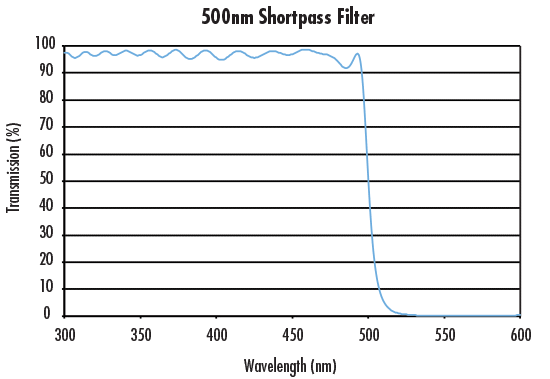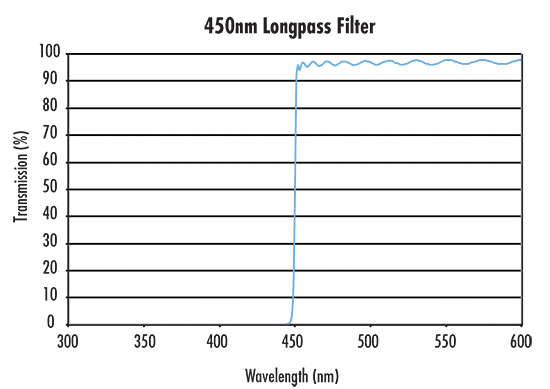Bandpass filters are optical components designed to transmit light within a specific range of wavelengths, known as the band, while blocking wavelengths outside of this range. While many standard bandpass filters are commercially available, some applications require custom specifications for bandwidth or center wavelength that may not be easily found. In such cases, stacking Longpass and Shortpass filters can create a tailored bandpass filter.
Longpass filters are designed to reflect shorter wavelengths while allowing longer wavelengths to pass through. On the other hand, Shortpass filters transmit shorter wavelengths and reflect longer ones. Figure 1 illustrates examples of both filter types.
Figure 1: Transmission Comparison of Shortpass and Longpass Filters
The transmission characteristics of these filters closely resemble Heaviside functions (H(λ)) in mathematics. These functions are piecewise-defined, with a value of one over a certain range and zero elsewhere, as shown in Equation 1. In this context, H(λ) represents the transmission property of a filter, and λ symbolizes the wavelength.
\[\tag{1}H(\lambda-x)=\begin{cases}0,\qquad\lambda\lt{x}\\1,\qquad\lambda\ge{x}\end{cases}\]
Figure 2 presents a Heaviside-based representation of the Longpass filter (LWP) transmission curve from Figure 1.
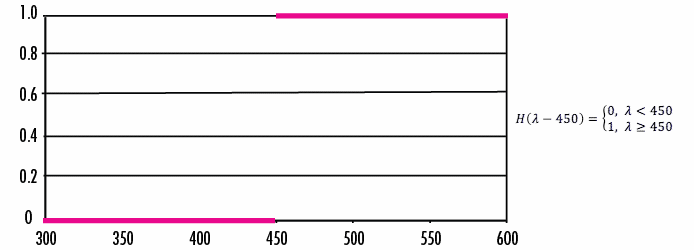
A custom bandpass filter can be created by combining two or more filters, similar to multiplying Heaviside functions in mathematics. To achieve a rectangular transmission range from 540 to 545 nm, for example, two Heaviside functions can be multiplied, as demonstrated in Equation 2 and Figure 3.
\[\tag{2}\begin{align}\text{Let: }H_1&=H(\lambda-450)=\begin{cases}0,\qquad\lambda\lt450\\1,\qquad\lambda\ge450\end{cases}\\H_2&=H(-\lambda+500)=\begin{cases}0,\qquad\lambda\gt500\\1,\qquad\lambda\le500\end{cases}\\H_1\times{H_2}&=BP_{1,2}(\lambda)=\begin{cases}0,\qquad\lambda\lt450\\1,\qquad450\le\lambda\le500\\0,\qquad\lambda\gt500\end{cases}\end{align}\]
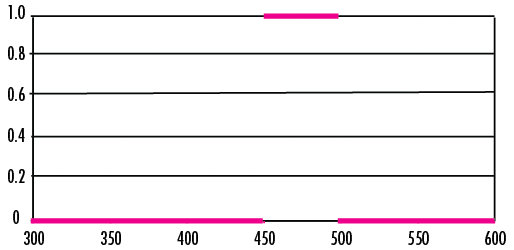
In practice, this mathematical multiplication corresponds to layering optical filters so that light passes sequentially through each filter. Each filter selectively transmits certain wavelengths, and the result is a customized transmission range and this is shown in Figure 4.

The resulting transmission curve is shown in Figure 5.
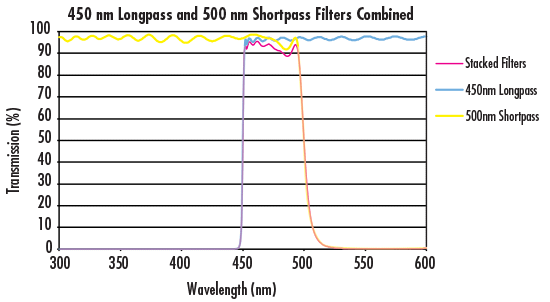
Stacking Longpass and Shortpass filters provides a quick and effective way to create custom bandpass filters. This approach is ideal when existing off-the-shelf filters do not meet specific requirements, or when designing a custom filter from scratch is prohibitively expensive or time-consuming.

